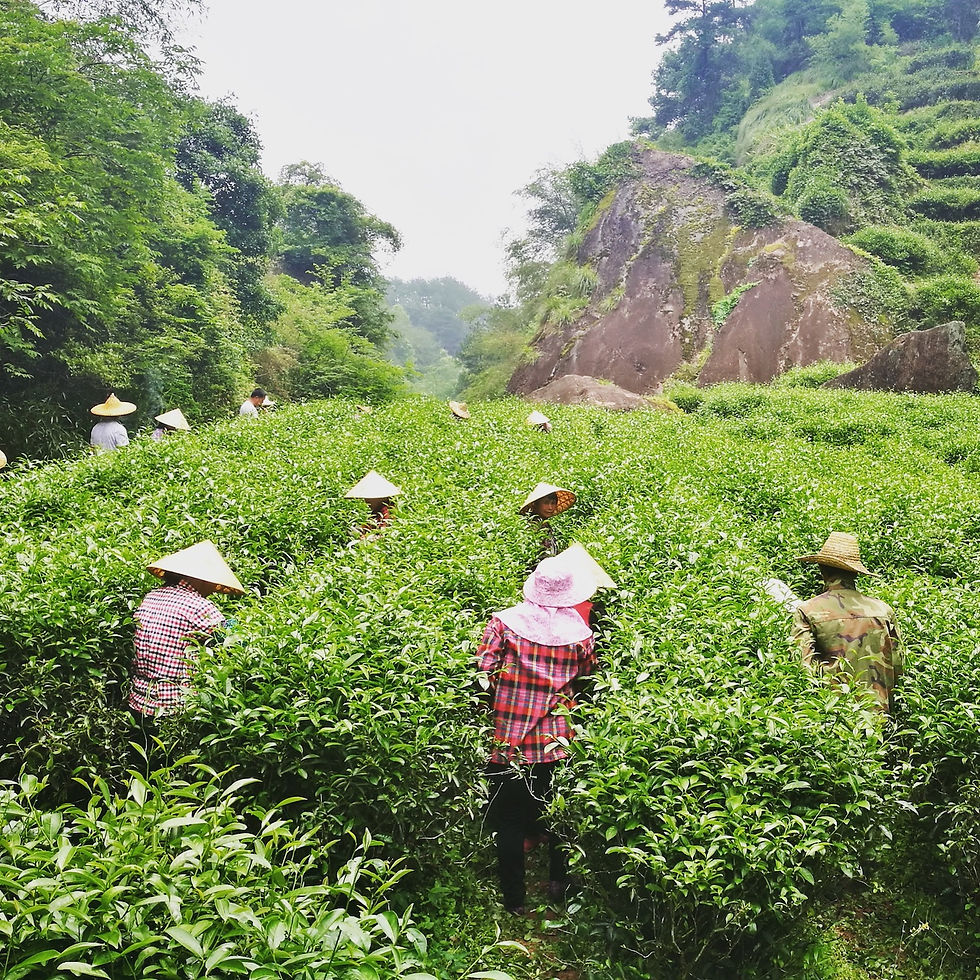Blog 102: Understand The Spring Harvest
- Valley Brook Tea

- Mar 12, 2019
- 3 min read
This year’s spring harvest is just around the corner. In our tea mountains, tea leaves are growing flourishingly. They have been accumulating nutrients for the entire winter. Our tea plants are patiently waiting for the new harvest season.
To consumers, spring tea definitely offers the best quality. Evidently, spring harvest refers to fresh tea leaves that are harvested in spring. This should be a very straightforward concept. But there are various technical definitions of spring, how do tea makers know when to start the spring harvest?
In practice, tea makers like us use Chinese Lunar Calendar. In Lunar Calendar, there are a total of 24 solar terms (Chinese: 节气, pronunciation: Jié Qi) which was developed in B.C. 104. In agriculture, this calendar system is more practical because it can stay synchronized with the seasons.
Because we are a tea producer specialize in oolong tea, black tea and white tea, our tea-making season starts later than most green tea producers. In our tea-making, the spring harvest is associated 4 solar terms: Chun Fen(春分, mid-late March), Qing Ming(清明, early April), Gu Yu(谷雨, mid-late April), and Li Xia(立夏, early May). (Please click here for name explanations in Wikipedia)
In tea-making, the first spring harvest is called Tou Chun Cha (Chinese: 头春茶, literal meaning: head of spring tea). In some rare cases, there are also “second spring harvest”, or Er Chun Cha (Chinese: 二春茶). When extreme weathers such as a frostbite hit tea plants, newly sprouted tea leaves are harmed. Tea makers have no choice but to wait for tea leaves to regrow. Because of re-sprouted leaves have low nutrient contents, second spring harvest usually has lower quality tea leaves. Due to this fact, most tea makers choose to not to do a second spring harvest.
Even for the spring harvest, different teas have different harvest schedules. Each year, our calendar starts with white tea, then black tea, and finishes with oolong tea.
White tea harvest begins about a week before Chun Fen, which is in mid-March. The first batch of white tea harvest has a distinctive feature: dazzling green. Even under the white fuzz of fresh white tea leaves, the greenness still shines. Spring white tea harvest generally has smaller leaves. If not looked carefully, one can easily mistaken fresh white tea leaves with green tea leaves.
Black tea harvest commences while white tea harvest still in process. Depends on location, black tea harvest starts between Qing Ming (early April) and Gu Yu (late April). Warmer the temperature, earlier the harvest. Surprisingly, Tongmu, the birthplace of black tea, starts the spring harvest around Gu Yu (late April), which is about one and half week later than most areas.
Late April is also when our oolong harvest begins. Oolong harvest can continue into Li Xia in early May. After early May, most harvest activities are finished. For oolong tea, there will still be a long and hard tea-making process. Most Wuyi oolong products come to market months after the harvest.
We hope this blog can provide you with our spring tea harvest information. Just last week, we received an inquiry from a nice customer asking if we can make some black tea now so he can try this season’s tea before everybody does. As a tea maker, we want to put our products into the market as soon as possible. But we cannot disobey the rule of nature. Waiting for something we love is difficult, but our patience will be rewarded with great tea-drinking pleasure from this year’s spring harvest.
As always, if you have questions or suggestions, please leave a comment, tweet us @valleybrooktea or email the author directly at zhang@valleybrooktea.com. Please also follow us on Instagram @valleybrooktea and join our mail list to get our daily tea updates and our latest promotions!








Comments